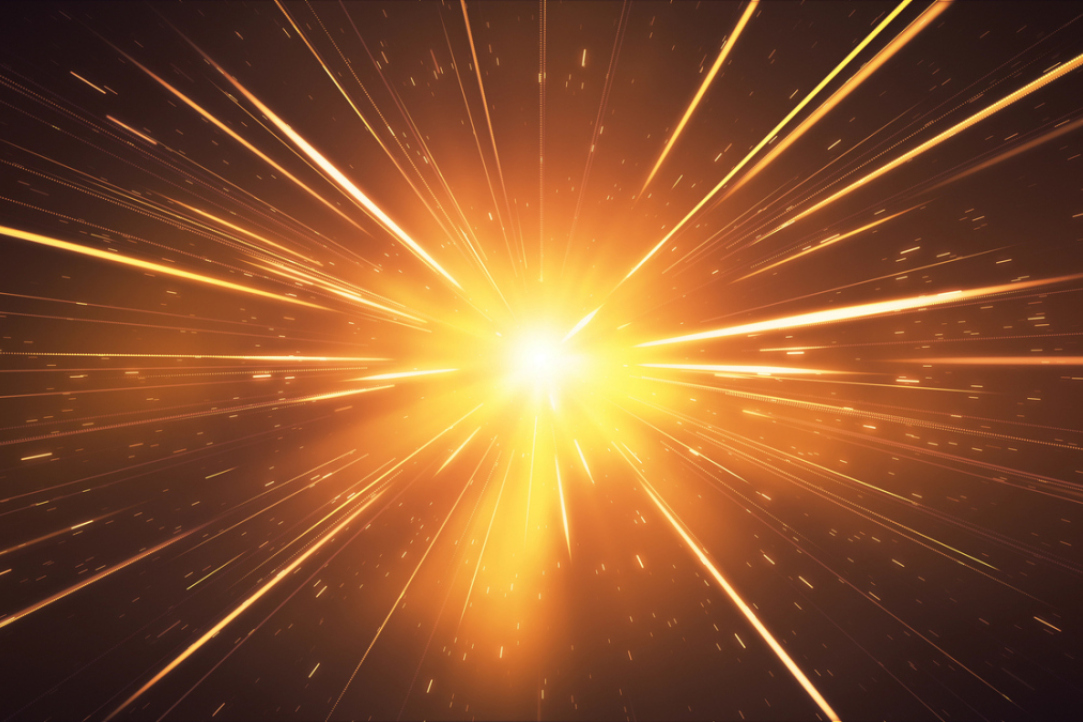Adhesive Tape Helps Create Innovative THz Photodetector

It is 10,000 times thinner than a sheet of paper and has been inspired by the discovery made by Nobel Prize winners Andre Geim and Konstantin Novoselov.
An international team of researchers, including scientists at HSE University and Moscow Pedagogical State University (MPGU), has developed a novel photodetector composed of a thin superconducting film, capable of detecting weak terahertz (THz) radiation. This discovery holds promise for studying objects in space, developing wireless broadband communication systems, and making advancements in spectroscopy. The study has been published in Nano Letters.
The study was conducted with support from the Russian Science Foundation (RSF), Projects No. 21-72-10117 and No. 23-72-00014.
Superconducting Hot-Electron Bolometers are a type of highly sensitive photodetectors capable of capturing low-intensity electromagnetic radiation in the terahertz range. These detectors find application in astronomy for studying space objects such as stars, galaxies, and cosmic microwave radiation. Additionally, they are sought after in security and medical diagnostic systems, as they facilitate the visualisation of concealed objects with resolutions reaching hundreds of micrometres.
When the photosensitive element of such a detector absorbs electromagnetic radiation, it undergoes local heating, leading to the formation of thermalised electrons with kinetic energy surpassing the material's average electron energy. The emergence of overheated electrons causes a shift in the resistance of the photosensitive element, thereby generating an electrical signal that can be measured.
Current commercial superconducting bolometers employing overheated electrons are manufactured using films produced through magnetron sputtering techniques. This technology presently lacks the capability to produce materials thinner than a few nanometres, whereas the detector's performance is directly influenced by the deposition quality.
An international team of researchers, including scientists at MIEM HSE, have proposed using a thinner material and an alternative method for applying the detector’s photosensitive element. Taking inspiration from Nobel Prize winners Andre Geim and Konstantin Novoselov, who produced graphene by repeatedly cleaving graphite with adhesive tape, the study authors successfully obtained ultrathin films of niobium diselenide (NbSe2) by delaminating atomic layers from the material using polymer adhesive tape.

Research Fellow, MIEM HSE
We worked as part of a large international collaboration consisting of specialists in photodetectors and experts in two-dimensional materials. We pooled our expertise to develop a sensitive and compact terahertz radiation detector with a thickness of just a few atomic layers of niobium diselenide, which is 10,000 times thinner than a standard sheet of office paper. Furthermore, this technology enables us to obtain materials with an optimal structure. It is easy to apply and does not require specialised equipment.
The authors also investigated the reaction of NbSe2 to THz radiation. They examined how the material heats up upon exposure to an electromagnetic wave and how the detector's properties vary depending on its environment—the substrate and electrodes—given that two-dimensional materials are sensitive to their surroundings. The scientists have also identified the mechanisms that constrain the sensitivity and speed of the detector.
The scientists emphasise that their pioneering work to develop a bolometric THz radiation detector demonstrates the potential for such a device to eventually surpass existing commercial solutions.

Doctoral student and Research Fellow, MIEM HSE
We have demonstrated that using the proposed technology makes it possible to manufacture a bolometric THz radiation detector with characteristics similar to those of existing commercial counterparts.
See also:
HSE Psycholinguists Launch Digital Tool to Spot Dyslexia in Children
Specialists from HSE University's Centre for Language and Brain have introduced LexiMetr, a new digital tool for diagnosing dyslexia in primary school students. This is the first standardised application in Russia that enables fast and reliable assessment of children’s reading skills to identify dyslexia or the risk of developing it. The application is available on the RuStore platform and runs on Android tablets.
Physicists Propose New Mechanism to Enhance Superconductivity with 'Quantum Glue'
A team of researchers, including scientists from HSE MIEM, has demonstrated that defects in a material can enhance, rather than hinder, superconductivity. This occurs through interaction between defective and cleaner regions, which creates a 'quantum glue'—a uniform component that binds distinct superconducting regions into a single network. Calculations confirm that this mechanism could aid in developing superconductors that operate at higher temperatures. The study has been published in Communications Physics.
Neural Network Trained to Predict Crises in Russian Stock Market
Economists from HSE University have developed a neural network model that can predict the onset of a short-term stock market crisis with over 83% accuracy, one day in advance. The model performs well even on complex, imbalanced data and incorporates not only economic indicators but also investor sentiment. The paper by Tamara Teplova, Maksim Fayzulin, and Aleksei Kurkin from the Centre for Financial Research and Data Analytics at the HSE Faculty of Economic Sciences has been published in Socio-Economic Planning Sciences.
'Even among Geniuses, Luck Plays a Role in Winning a Nobel Prize'
Denis Bodrov studies particle physics and works at one of the four electron–positron colliders in the world. In this interview with the HSE Young Scientists project, he talks about his efforts to go beyond the Standard Model, discusses tau leptons, and shares his affection for Moscow.
Larger Groups of Students Use AI More Effectively in Learning
Researchers at the Institute of Education and the Faculty of Economic Sciences at HSE University have studied what factors determine the success of student group projects when they are completed with the help of artificial intelligence (AI). Their findings suggest that, in addition to the knowledge level of the team members, the size of the group also plays a significant role—the larger it is, the more efficient the process becomes. The study was published in Innovations in Education and Teaching International.
New Models for Studying Diseases: From Petri Dishes to Organs-on-a-Chip
Biologists from HSE University, in collaboration with researchers from the Kulakov National Medical Research Centre for Obstetrics, Gynecology, and Perinatology, have used advanced microfluidic technologies to study preeclampsia—one of the most dangerous pregnancy complications, posing serious risks to the life and health of both mother and child. In a paper published in BioChip Journal, the researchers review modern cellular models—including advanced placenta-on-a-chip technologies—that offer deeper insights into the mechanisms of the disorder and support the development of effective treatments.
Using Two Cryptocurrencies Enhances Volatility Forecasting
Researchers from the HSE Faculty of Economic Sciences have found that Bitcoin price volatility can be effectively predicted using Ethereum, the second-most popular cryptocurrency. Incorporating Ethereum into a predictive model reduces the forecast error to 23%, outperforming neural networks and other complex algorithms. The article has been published in Applied Econometrics.
Administrative Staff Are Crucial to University Efficiency—But Only in Teaching-Oriented Institutions
An international team of researchers, including scholars from HSE University, has analysed how the number of non-academic staff affects a university’s performance. The study found that the outcome depends on the institution’s profile: in research universities, the share of administrative and support staff has no effect on efficiency, whereas in teaching-oriented universities, there is a positive correlation. The findings have been published in Applied Economics.
Physicists at HSE University Reveal How Vortices Behave in Two-Dimensional Turbulence
Researchers from the Landau Institute for Theoretical Physics of the Russian Academy of Sciences and the HSE University's Faculty of Physics have discovered how external forces affect the behaviour of turbulent flows. The scientists showed that even a small external torque can stabilise the system and extend the lifetime of large vortices. These findings may improve the accuracy of models of atmospheric and oceanic circulation. The paper has been published in Physics of Fluids.
Solvent Instead of Toxic Reagents: Chemists Develop Environmentally Friendly Method for Synthesising Aniline Derivatives
An international team of researchers, including chemists from HSE University and the A.N. Nesmeyanov Institute of Organoelement Compounds of the Russian Academy of Sciences (INEOS RAS), has developed a new method for synthesising aniline derivatives—compounds widely used in the production of medicines, dyes, and electronic materials. Instead of relying on toxic and expensive reagents, they proposed using tetrahydrofuran, which can be derived from renewable raw materials. The reaction was carried out in the presence of readily available cobalt salts and syngas. This approach reduces hazardous waste and simplifies the production process, making it more environmentally friendly. The study has been published in ChemSusChem.


